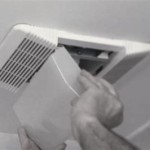What Are The Tiny Bugs On My Bathroom Floor?
Finding tiny bugs in your bathroom can be unsettling, but it's important to identify them correctly to address the problem effectively. These bugs might be harmless, but some can indicate potential health risks or even necessitate professional pest control. This article explores common culprits behind bathroom bug infestations and provides practical tips for prevention and control.
Common Bathroom Bugs
Several types of tiny bugs are commonly found in bathrooms, including:
- Springtails: These tiny, wingless insects are often mistaken for fleas due to their jumping ability. They are typically less than 1/16 inch long and are attracted to moist environments. Springtails are generally harmless and feed on decaying organic matter.
- Mites: These microscopic creatures can be found in various types, including dust mites, chiggers, and spider mites. While some mites are harmless, others can cause skin irritation or allergic reactions. They thrive in humid environments and can be found in shower stalls, tubs, and even on towels.
- Silverfish: These silvery, fish-shaped insects are about 1/2 inch long and are commonly found in bathrooms due to their preference for dark, damp places. They feed on starchy materials like paper, wallpaper, and even fabrics. While not particularly dangerous, they can damage belongings.
- Centipedes: These elongated creatures with many legs are typically found in damp basements and bathrooms. They are predatory insects and can be beneficial in controlling other pests, however, their appearance can be unsettling. They prefer dark, humid environments.
- Fruit Flies: Commonly called "drain flies," these tiny, black flies are attracted to overripe fruits and vegetables, as well as decaying organic matter. They are often seen around drains and can be a sign of poor sanitation or clogged pipes.
Identifying The Source
Once you've identified the type of bug you're dealing with, you can begin to address the root cause of the infestation. To effectively eliminate these pests, it's crucial to understand where they are coming from. Some helpful questions to ask yourself include:
- What type of bug is it? Identifying the specific bug will give you clues about its preferred habitat and what attracted it to your bathroom.
- Where is the bug located? Is it concentrated around the shower, sink, or near a drain? This can help determine where the bugs are breeding or finding food.
- Is there any visible moisture or water damage? Excess moisture can attract many insects, so addressing leaks or drainage problems is essential.
- Are there any food sources? Check for any food crumbs, spilled drinks, or other organic matter that might be attracting the bugs.
Prevention and Control
After identifying the bugs and their source, you can implement the following steps to prevent and control infestations:
Hygiene and Sanitation
- Clean Regularly: Thoroughly clean your bathroom regularly, paying particular attention to areas where moisture accumulates, such as shower stalls, tubs, and sinks. Use a disinfectant cleaner to kill any bacteria or mold that could attract insects.
- Keep Surfaces Dry: Ensure that all surfaces in your bathroom can dry completely after each use. Wipe down shower walls, floors, and countertops to prevent moisture buildup.
- Address Leaks and Drainage Issues: Promptly repair any leaky faucets, pipes, or showerheads. Ensure drains are clear and free of clogs.
Storage and Food Management
- Store Food Properly: Avoid leaving food out in the open, especially in areas prone to moisture, such as bathrooms. Store food in airtight containers to prevent attracting fruit flies.
- Clean Up Spills: Immediately clean up any spills or food crumbs to prevent bugs from being attracted to the bathroom.
Pest Control Measures
- Diatomaceous Earth: This natural powder dehydrates bugs and can be used to create a barrier around areas where bugs are present. Apply a thin layer along baseboards, under sinks, and in other areas where bugs may gather.
- Borax: This readily available household product can be used to kill ants and other insects. Sprinkle a small amount around drain areas and under sinks.
- Insect Traps: Sticky traps and other insect traps can help capture and monitor bug populations. Place these in strategic locations, such as near drains or under sinks.
- Professional Pest Control: If the infestation persists or you're dealing with a large population of bugs, consult a professional pest control company. They have the expertise and resources to effectively address the problem.
By understanding the common bathroom bugs, identifying their source, and implementing preventive measures, you can minimize the chances of encountering these unpleasant creatures in your bathroom. Regularly cleaning, addressing moisture issues, and using appropriate pest control methods can create a clean and bug-free environment.

Tiny Black Bugs And Other Common Bathroom Pests

Silverfish What Is This Bug In My Bathroom Plunkett S Pest Control

Bathroom Bugs Identification Guide How To Get Rid Of Each Type A Z Animals

Silverfish That Little Silver Bug In Your Bathroom Moyer

Bathroom Bugs Identification Guide How To Get Rid Of Each Type A Z Animals

Silverfish That Little Silver Bug In Your Bathroom Moyer

Tiny White Bugs In My Bathroom Orkin

Get Rid Of Springtails In Your Bathroom Charlotte Plumbing

Long Brown Bug In Bathroom This Is What It Might Be Drive Bye Pest Exterminators

Why Do I Have Springtails In The Bathroom Insectek Pest Solutions
Related Posts







